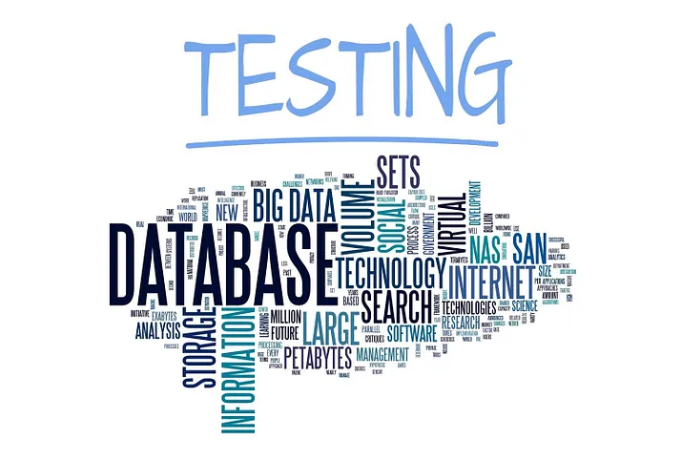Understanding Data Validation: Ensuring Accuracy in Your Projects
The Essential Guide to Implementing Effective Data Validation Techniques
Overview of Data Validation
Data validation is essential to guarantee the quality, integrity, and accuracy of the data utilized in various projects. Data validation validates that the information entered into a system complies with established rules or standards. This procedure is essential for avoiding mistakes and inconsistencies that might result in inaccurate analysis, subpar judgment, and damaged project results.
We cannot exaggerate the importance of data validation enough. Ensuring the accuracy and reliability of data is crucial in all projects, be it a small-scale scientific study or a report for a small firm. Data inaccuracies may escape detection and eventually lead to major issues with insufficient validation. Data entry into databases, data migration between systems, and real-time data processing are among a few examples where data validation is required.
Ensuring data quality, integrity, and accuracy are generally the main objectives of organizations that participate in data validation. Validation rules enable the early detection and correction of data issues before they become detrimental to the project. Input verification is a common step in this process, wherein validation methods and instruments intended to improve data accuracy are used. Companies like Unidata support this by offering high-quality data management solutions that help organizations validate and curate training data.

Image: Stock market data and trends
Important Points
- Preserving the quality, integrity, and accuracy of data requires data validation.
- It keeps data from having errors and inconsistencies.
- Real-time processing, data entry, and migration are common cases.
- Entities prioritize quality, integrity, and accuracy.
- Validation rules aid in error detection and correction.
Types of Data Validation
Various Methods of Data Validation
There are several forms of data validation, and each one serves a different purpose in ensuring the accuracy of the data. Understanding these methods can help you choose the most appropriate validation procedure for your specific needs.
- Syntax Validation: Analyzing if the data is formatted correctly or syntactically is the goal of syntactic validation. For example, syntax validation verifies whether or not the code adheres to the computer language's specifications.
- Semantic validation: Unlike syntactic validation, this method looks at whether the data makes sense in the context in which it is used. For example, the date "30/02/2023" will fail syntax validation even though it may pass semantic validation because February never has thirty days.
- Format validation: This method verifies that the data adheres to a predetermined format, such as social security numbers, phone numbers, or email addresses. Format validation is essential in domains where standardized data input is required.
- Range Validation: This process determines whether the data is within a given range. This is useful for scientific and financial applications where data points need to fall within acceptable ranges.
- Cross-field Validation: This validates consistency and logical accuracy by comparing data from several fields. For example, the "start date" on a registration form shouldn't be later than the "end date."

Image: Everything about data validation
Important Points
- Syntax validation ensures proper formatting.
- Semantic validation guarantees logical accuracy.
- Format validation standardizes data input.
- Range validation keeps data within limits.
- Cross-field validation guarantees consistency across fields.
Tools and Technologies for Data Validation
Popular Tools for Data Validation
There are many different technologies and solutions available that can assist with data validation; each has unique features and abilities. Choosing the right instrument can improve data accuracy and streamline the validation process. For instance, when handling data across different platforms, ensuring smooth data transfer is essential. Processes like Oracle To Bigquery migration facilitate the movement of data between systems while maintaining data integrity and validation standards.
- Overview of Data Validation Tools: Data validation tools come in a variety of forms, from straightforward scripts to intricate software packages. By automating the validation process, these solutions improve efficiency and reduce the possibility of human error.
- Best Data Validation Tools Features: It is important to look for data validation tools with features like real-time validation, integration with existing systems, user-friendly interfaces, and robust reporting capabilities.
- Examining and contrasting Tools: Every tool has a distinct set of benefits. For example, some are more general-purpose, while others are tailored for certain areas, such as finance or healthcare, or enhancing patient experience. You can find the best tool for your needs by comparing tools according to features, cost, and ease of use.
- The benefits and downsides of using automated tools: automated tools have many benefits, such as speed and precision, but they can also have drawbacks, including high initial costs and the need for constant maintenance.
- Popular technologies: IBM InfoSphere QualityStage, Informatica, and Talend are a few frequently used technologies for data validation. Strong features are offered by each of these technologies to guarantee the integrity and correctness of the data.

Image: Data validation tools
Key Points:
- Data validation tools: these come in the form of scripts and complex software.
- Real-time validation and thorough reporting are two important features.
- Tools differ in terms of functionality and industry.
- Automated tools can be expensive, but they can be fast and accurate.
- IBM InfoSphere QualityStage, Informatica, and Talend are some of the well-known tools.
Best Practices in Data Validation
Implementing Effective Data Validation Practices
Following best practices that increase accuracy and dependability is essential to ensuring the effectiveness of data validation processes.
- Setting up Validation Rules: The first step is to establish comprehensive and well-defined validation rules. These rules should account for all potential data scenarios and be updated frequently to take new needs into account.
- Regular Data Audits: Monitoring data errors regularly facilitates their early detection and correction. Audits should be part of a continuous monitoring process to ensure ongoing data integrity.
- • Error reporting and handling: When data errors occur, they should be addressed right away by putting in place efficient methods for handling them. This includes error reporting and handling. Together with real-time error reporting, this also includes thorough logs that support problem identification and solving.
- Continuous improvement and validation process: Validation procedures should be continuously reviewed and modified in light of user feedback and technical developments. Doing this ensures that the validation processes are updated and efficient.
- Case Studies of Successful Data Validation: Learning from successful case studies can provide crucial insights into optimal procedures. For example, a financial institution saw a significant decrease in errors and improved decision-making processes when it implemented strong data validation.
Important Points
- Clearly and thoroughly define the validation rules.
- Identify errors by conducting regular data audits.
- Put in place efficient processes for error handling and reporting.
- Continuously enhance the validation procedures.
- Gain insight from successful case studies.
Challenges in Data Validation
Common Issues and Solutions in Data Validation
Although data validation is essential, it also presents a unique set of difficulties. Maintaining data accuracy requires an understanding of these issues and the application of solutions.
- Common Difficulties Faced in Data Validation: Managing vast amounts of data, navigating a variety of data sources, and guaranteeing real-time validation without compromising performance are common difficulties encountered in data validation.
- Impact of Poor Data Validation: Inaccurate analyses and poor decision-making can result in serious financial and reputational losses in the long run.
- Effective strategies for overcoming validation challenges: These strategies include integrating validation processes into the data lifecycle, using scalable validation tools, and regularly training personnel who handle data.
- Real-world Examples of Validation Issues: The significance of strong validation procedures is emphasized by real-life examples, such as data breaches brought about by inadequate validation or financial losses from inaccurate data entry. The rise of AI in healthcare has introduced advanced solutions that help detect and rectify validation errors in real-time, reducing risks associated with inaccurate patient records and data mismanagement.
- • Future Trends and Changing Challenges: New trends and challenges in data validation are emerging as technology advances. Staying ahead of the curve in data management requires staying updated with these developments.

Image: Data validation challenges, including cyber security
Important Points
- Common challenges include handling large data volumes and diverse sources.
- Poor validation leads to inaccurate analyses and financial losses.
- Overcome challenges with scalable tools and integrated processes.
- Real-world examples emphasize the importance of validation.
- Stay updated on future trends and challenges.
Industry Applications of Data Validation
Data Validation Across Different Sectors
Data validation is essential in many industries, each with its own set of needs and challenges.
- Healthcare Data Validation: Accurate data validation in the healthcare industry guarantees patient safety, accurate diagnosis, and successful treatment regimens. Data validation techniques help in maintaining the integrity of patient management software and compliance with regulatory standards.
- Financial Data Validation: The financial sector mainly depends on data validation to guarantee transaction accuracy, regulatory compliance, and reliability of financial reporting.
- E-commerce Data Validation: This process ensures that orders are processed accurately, customers' information is verified, and inventory accuracy is maintained in e-commerce. This guarantees both operational effectiveness and a flawless customer experience.
- Manufacturing Data Validation: In the manufacturing sector, data validation guarantees the accuracy of production data, resulting in productivity and superior products.
- Government Data Validation: Government agencies use data validation to ensure accurate data for policy-making, preserve the integrity of public records, and adhere to legal standards.
Important Points
- Healthcare: Guarantees compliance and patient safety through accurate NGS variant interpretation.
- Financial: guarantees regulatory compliance and transaction accuracy.
- E-commerce: ensures order processing and customer information verification.
- Manufacturing: guarantees accurate data on production.
- Government: upholds legal compliance and the integrity of public records.
Conclusion
Summary and Final Thoughts on Data Validation
Data validation is an essential first step to ensuring the accuracy and integrity of data for any project. Businesses that know the various validation methods, use the right tools, and follow best practices can significantly reduce errors and improve the quality of their data.
The importance of maintaining data accuracy cannot be overstated. Robust data validation procedures lead to enhanced operational efficiency, better decision-making, and adherence to regulatory standards. Success in the ever-evolving world of technology will depend on keeping up with the most recent developments and consistently refining validation procedures.
Important Points
- Validating data guarantees its accuracy and integrity.
- Adhere to best practices to prevent mistakes and raise standards.
- Accurate data leads to better decision-making and efficiency.
- Keep an eye on emerging trends and keep refining procedures.
- To succeed, strong validation procedures should be put into place.
Start Implementing Efficient Data Validation Today!
To guarantee data accuracy and produce better results, begin incorporating strong data validation techniques into your projects right now. For your data validation procedures to remain successful and efficient, stay up-to-date on the latest technologies and industry best practices. Practice your skills with real-world data projects now.
Ensure your project data is accurate and reliable with robust data validation practices. Microsoft Excel, available at FastSoftwares, offers powerful data validation tools to help you maintain data integrity and improve decision-making. Learn more about how Microsoft products can enhance your data management and ensure project success by visiting our about page. Start implementing these essential tools today to keep your data accurate and your projects on track!